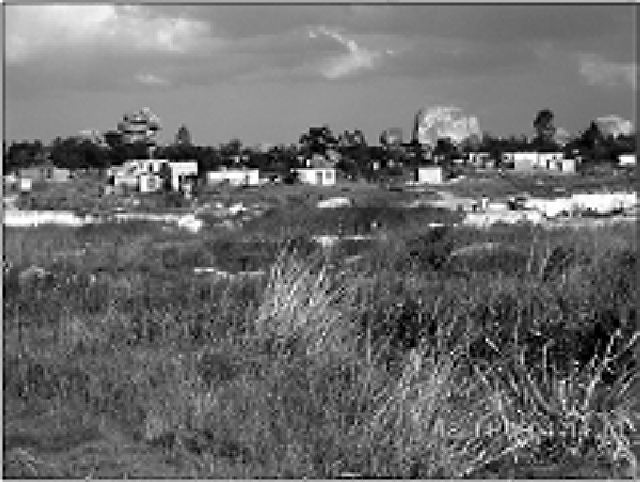Environmental Engineering Reference
In-Depth Information
practices. It was orally administered to 384 households and addressed a series of
socioeconomic and demographic parameters. The households to be selected were spread
across the six local board wards of Epworth, using a population-based weighting, which
in turn determined the number of clusters required and the sample sizes (Table 6.2).
Figure 6.4. The informal “gada”
settlement of Jacha, Ward 1, Epworth.
Within each cluster, systematic random sampling was used. Every fourth residential stand
was chosen and a total of ten households randomly chosen were interviewed. Having
determined which households to visit, the questionnaires were administered to present
heads of household or a spouse, child or other relative or lodger regardless of whether
they owned or rented their residencies. That ensured a mixture of people with varying
land tenure status and socioeconomic characteristics.
2.2
Groundwater Quality
Reconnaissance sampling across the whole of Epworth settlement established
problematically high levels of coliforms and nitrate (Zingoni et al
.
2004). Detailed
groundwater sampling was restricted to Ward 1, which was selected as the area where a
high proportion of residents rely on shallow groundwater for water supply and on pit
toilets for sewage disposal (based upon the water supply and sanitation survey, see
below).

